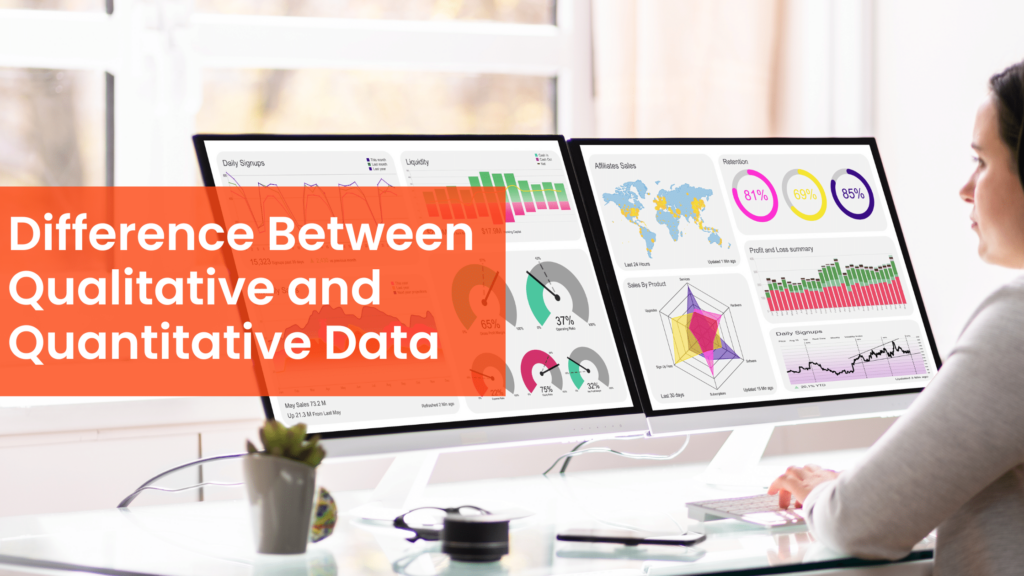 Qualitative and quantitative data are two types of data used in research, each having its unique characteristics and methods of analysis. This blog post will discuss the critical differences between qualitative and quantitative data.
Qualitative and quantitative data are two types of data used in research, each having its unique characteristics and methods of analysis. This blog post will discuss the critical differences between qualitative and quantitative data.
Qualitative Data Qualitative data is descriptive and cannot be measured or quantified. It is typically collected through observations, interviews, and surveys. Qualitative data is often used to gather insights and opinions about a particular topic and understand people’s behaviors and attitudes.
Qualitative data is usually represented in words, narratives, and stories. It is analyzed by identifying patterns, themes, and meanings within the data. Researchers often use qualitative data to develop new theories and ideas and explore complex phenomena.
Quantitative Data Quantitative data can be measured or quantified and is typically collected through surveys, experiments, and other structured methods. It is often used to provide numerical information about a particular phenomenon, such as the number of people with a particular disease or the percentage of a population supporting a specific policy.
Quantitative data is usually represented in the form of numbers and statistics. It is analyzed using statistical methods such as correlation, regression, and hypothesis testing. Researchers often use quantitative data to test existing theories and hypotheses and make predictions about future events.
Critical Differences Between Qualitative and Quantitative Data
- Data Type: Qualitative data is descriptive and cannot be measured or quantified, while quantitative data is numerical and can be measured or quantified.
- Data Collection: Qualitative data is often collected through observations, interviews, and surveys, while quantitative data is collected through structured methods such as surveys and experiments.
- Analysis: Qualitative data is analyzed by identifying patterns, themes, and meanings within the data, while quantitative data is analyzed using statistical methods such as correlation, regression, and hypothesis testing.
- Purpose: Qualitative data is often used to develop new theories and ideas, as well as to explore complex phenomena, while quantitative data is often used to test existing theories and hypotheses, as well as to make predictions about future events.
In conclusion, qualitative and quantitative data are essential in research, and each has unique strengths and weaknesses. Therefore, researchers should carefully consider which data type is most appropriate for their research question and objectives and use the proper data collection and analysis methods to obtain meaningful results.